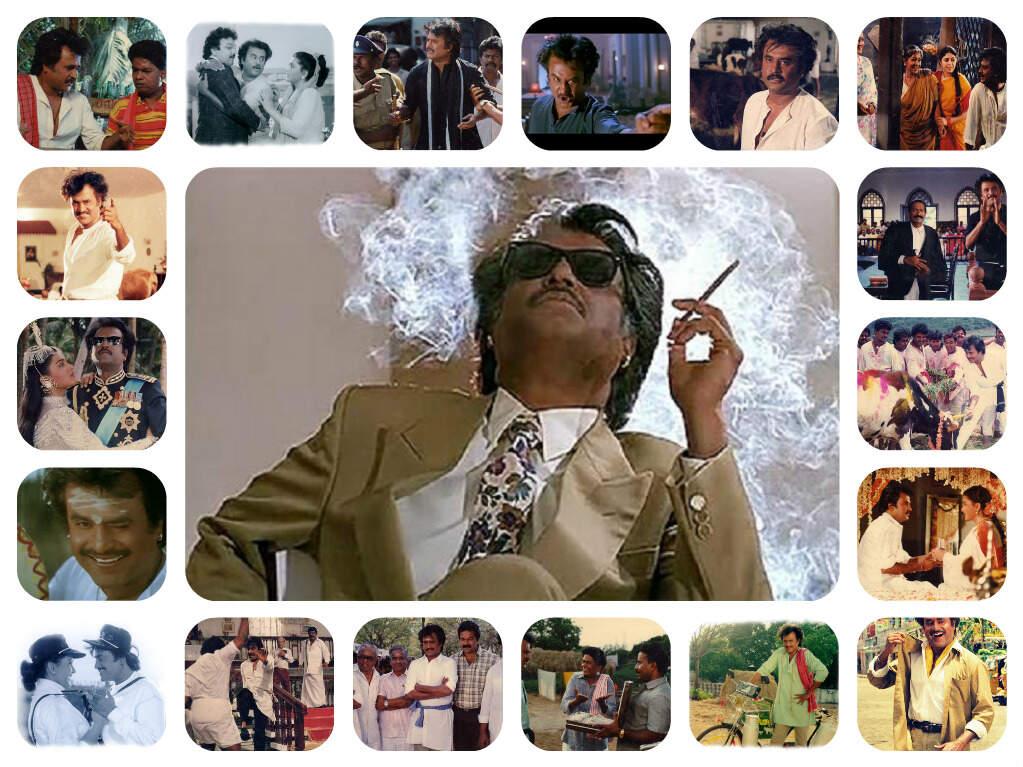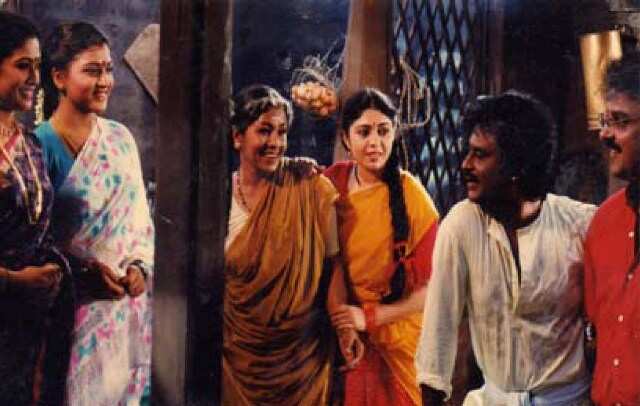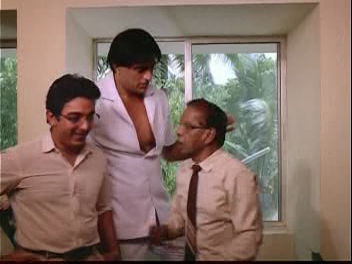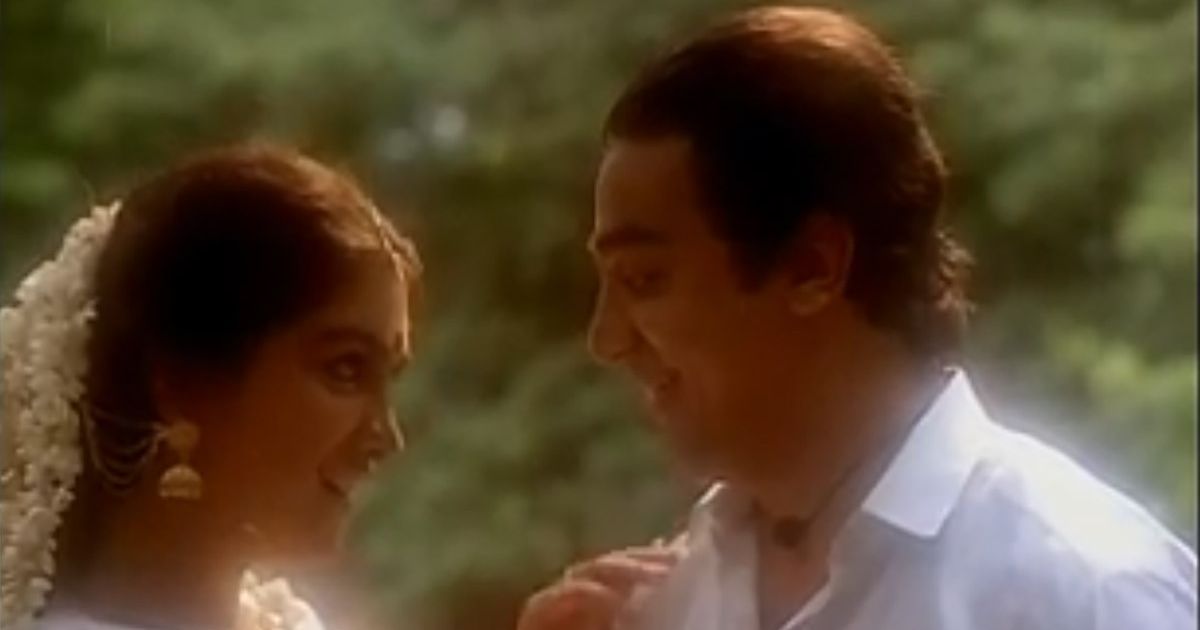This conversation aims to provide the reader a guided tour of some of the finest malayalam movies (especially from the eighties to the nineties).
Gayatri: I’ve recently discovered the fantastic world of Malayalam cinema, mostly by watching recent releases. I haven’t really found the right way to navigate the archives though, so I asked Sai for a guided tour.
Sai: Gayatri, welcome to the club! I remember being in your shoes in the first few years of my undergrad (incidentally, in Kerala). That was really the period where I got exposed to Malayalam cinema. One aspect that really stands out (for me) is the quality of mainstream movies there. I mean, there are movies which a majority wouldn’t believe can be made in the commercial space but are being made and run to packed houses.
I am elated to give you a tour but I am curious to know how you would want it. In particular, what fascinates you the most in a movie — is it the writing/direction/acting/music/cinematography?
G: It’s amazing how unusual and gutsy so many of the storylines are, even in some pretty ancient movies. I guess that’s what interests me the most. Let’s try this, imagine a friend who’s never watched Malayalam cinema and has a pretty bad opinion of the whole industry, thinks it’s a bunch of lousy rom-coms. What’s one movie you would pick to change their opinion?
S: I would go with two movies — Nadodikkaatu and Anantaram. The former is a comedy of desperation and the latter is a stunning formal experiment. Both these movies released in the same year (1987) and were commercially successful, which is a testament to the fact that eighties were indeed the golden period of Malayalam cinema.
Nadodikkaatu is a probably a first of its kind even in South Indian cinema. It presents characters whose plight should ideally make us cry but instead makes us laugh. At surface, it is the story of two unemployed youngsters Dasan (Mohanlal) and Vijayan (Sreenivasan) who are conned by people around them — the house owner, a middleman who promises to land them in Gulf (read Dubai), their smuggler boss and finally, a local politician. The movie is so entertaining that it is easy to overlook the sad undercurrents. Dasan is unable to take care of his ailing mother. Even the supporting characters (e.g., the heroine) toe the poverty line. Dasan and Vijayan are in fact a stand-in for the educated and unemployed youth of that time. They continue doing odd jobs to make ends meet. (Tidbit: The episode where they try their hand at a dairy business (with a ‘Delhi’ cow) and their subsequent trip to ‘Gulf’ is one of the most sustained stretches of farce I’ve seen.) Entertainment that says something and is about something is an elusive holy grail that filmmakers keep chasing. It’s interesting that this movie found it many decades back.
Anantaram, on the other hand, is far from being straightforward. It tells two related stories but it’s hard to tell which part of these stories is real and which is cooked up by the narrator (Ajayan, played by Ashokan). He tells us two stories from his life — one followed by the other. Both these stories have similar characters (they revolve around the same woman played by Shobhana) but the narrator reveals different shades of them in each story. Heck, even the narrator’s perception of himself changes considerably in the second story. Is he psychotic? Is he lying? Is he making a fool out of us? The movie does not provide any answers but I will leave you with the stunning climax that has a boy who climbs up and down a stairs. In the upward phase, he counts odd and in the downward one, he counts even. Perhaps, it’s a way to tell us that the reality is a superset of incidents from both the stories but it can never be recovered. Interestingly, the director Adoor Gopalakrishnan called the movie “an organized dream made up by the narrator’s conscious mind ”.
What do you think about these movies, G?
G: Ooh, Sai, interesting. I really like the comedy in Malayalam cinema, although that might just be a personal preference, so I will watch the first movie when I need a pick-me-up sometime. The second one is actually more intriguing, the sort that motivates me to watch movies in this language I don’t even understand. You won’t believe the amount of time I’ve spent hunting for subtitles to some of these movies.
So you mentioned the 80s being a golden period, and I’ve read that a couple of decades after this were swamped with rom-coms. Do you remember any of these for being exceptional, doing something funky?
S: Haha, finally! 🙂 Yea, getting subtitles for some of these old movies (even the popular ones) is incredibly hard. In my case, once I learnt the language (in speaking fluency), things became much smoother.
I will tell you a specific kind of movie (we could call it a genre) which I like a lot: they start off on a lighter/happier note and then go on to become gut-wrenching tragedies. One film that I find very interesting in this genre is Kireedam which starts off with a happy family headed by Achuthan Nair (played marvelously by Thilakan). Achuthan is a sincere Police Constable and wants his son Sethumadhavan (Mohanlal) to become an inspector. That’s really Achuthan’s height of ambition. The movie makes us spend time these characters — Sethu has a loving mom and he is engaged to Devi (the daughter of his maternal uncle).
That’s when tragedy strikes. Sethu gets involved in a fight with a feared criminal and injures him. His life would never be the same again. He goes on to lose his loved one, shatters his father’s dreams and his family dynamics go in for a toss. This is beautifully depicted in the song “Kanneerpovinte” where we see that his life has literally become empty. At a philosophical level, it’s just the way life foils our plans but to see it on screen is extremely depressing!
Would you listen to “Kanneerpovinte” and get back?
G: I like the song, but I think I’ll have to watch the movie to understand what you’re getting at. Yeah, I watched this movie Thenmavin Kombath which had a similar structure – they use these humorous/romantic sketches to lay out the characters and setting elaborately (not for half an hour or an hour but 2.5 hours, for god’s sake, until you think the movie is ending soon) before introducing some serious conflict extremely late into the movie. I watched it with a friend, and she said that this is typical of older Malayalam movies. It’s interesting and seems to draw from oral storytelling traditions but I must say I prefer a tighter, shorter story. Speaking of which, you’ve mentioned before that Mollywood is, or used to be, closely associated with Malayalam literature. Tell me a little more about this?
S: Oops, my bad. The song is pretty symbolic actually — in the sense that there is a scene where he (Mohanlal) walks down a road and there is emptiness on both sides. It signifies the emptiness in his life at that point but yes you really need more context from the movie.
Yes, I have studied this genre (comedy-morphs-into-tragedy) for quite a while now and I think it works very well since it amplifies the tragedy/conflict. I will tell you an interesting fact. Thenmavin Kombath was remade in Tamil as Muthu with Rajinikanth as the lead (playing Mohanlal’s role) and naturally they wanted some Rajini-isms. Hence, they added a heroic flashback portion where it is revealed that Rajini is indeed the boss and the other guy happens to be one of his aides. TK was comparatively more grounded and it had beautiful cinematography (K.V. Anand won a National Award).
On the connection to literature, M.T. Vasudevan Nair (affectionately called MTV) has to be credited for establishing this and improving the overall quality of Malayalam cinema. MTV is indeed a seminal chapter in the history of Indian cinema. Arriving from a strong background in literature (Jnanpith Award Winner) and anticipating the terseness of the Bharathan-K.G.George-Padmarajan era, it didn’t take MTV that longer to find his footing in cinema. Let me talk about Thaazhvaram, which is a spaghetti-western (!) written by MTV and directed by Bharathan. At the outset, it’s your standard revenge saga but the way it plays out is beautiful and gripping. In particular, most of the action is not shown but left to our imagination. One thing that fascinates me in this movie is how the characters are written, especially the female lead. In particular, we are told information in bits and pieces — only so much that is needed to move the story forward. This is very economical storytelling.
G, what is your general take on books being adapted into movies?
G: If you ask me whether I’ve watched a movie or a show, I’ll very likely respond with ‘No, but I’ve read the book’. I think that’s because I’m more comfortable with that medium – I can handle violence, cheesiness and other dangerous things much better in print than on screen. Other than that, both media are powerful in their own ways. But enough! I’m supposed to be asking the questions here 😀 Speaking of adapting books into movies – have you watched Chemmeen?
S: It was a nice role-reversal for me (laughs). For me, it’s quite the other way round. Cinema comes first for before all other mediums. Now that I think about it, I think all my current interests of music, literature and theatre sprouted from Cinema.
Yes, I have seen Chemmeen but haven’t read the book by Thakazhi (again, a legend). I remember the stunning climax. In particular, there used to be this myth in the fisherman community on chastity — if a woman cheats on her husband while he is at sea, he would be consumed by the sea. It is quite regressive seen from the vantage of today (probably any day :)) but I like how this myth was explored in a coastal setting (which makes it almost real).
Maybe I am digressing a bit but Manichithrathazhu does something similar as well. It takes this age old myth of a dead person’s spirit inhabiting a (vulnerable) living one and places it in the contemporary world of psychiatry (read psychosis, neurosis, split-personality disorder). The result is a science-cum-superstition fiction that strikes a balance between traditional beliefs and scientific thought. Making such a movie is like walking on a tightrope; overplay the science, you dismiss the superstition. Overplay the superstition, you end up dismissing science. You really need solid writing to handle this.
G: Hmm, it’s quite an art.
So, you’ve given me quite the list of movies (and subtitles) to hunt down. Most of these are older movies though, and Mollywood is only growing more edgy today. Perhaps we should save that for another post but before we end, can you tell us about a couple of your more recent favourites?
S: Good luck with your hunting! I will pick two (like I have done almost always on this thread). The first is Bangalore Days. In terms of story, it is a typical feel-good fantasy but the beauty is in the filmmaking (both writing/direction). One particular scene that stood out for me is when Kuttan (Nivin Pauly) gets out of office in the late afternoon. He sees a school going girl selling flowers and buys some from her. She has this elated smile, thanks him and leaves. Now, this definitely is a very well directed scene: in terms of framing/staging. But you might ask what it does to move the story forward? Perhaps nothing but these nuggets of nothingness give a slice-of-life feel to the proceedings. Just just beauitiful!
The second is Maheshinte Prathikaram. The title makes us expect a classic revenge saga but the movie that plays out hardly is. Instead, it has stupendous stretches of comedy — involving a series of phone calls, references to Mammotty/Mohanlal and Mahesh’s photography skills. The movie is so enjoyable at surface that it’s easy to overlook the dense layers. For example, the slippers shown to us in the first scene go on to play a major role in the proceedings later.
I would happily settle for this quality of mainstream cinema any day!
G: Alright! Let’s wrap up here. Note to the reader: if you’ve gotten up to this point in our conversation, you probably want to try a couple of these movies. If you want to stay on the right side of the law – Maheshinte Prathikaram is currently available with English subtitles on Netflix (at least in the U.S.) and so is Angamaly Diaries, a FABULOUS movie that kicked off my interest in Malayalam cinema. Anyways, thank you, Sai, for letting me pick your brain. This is a great haul!









